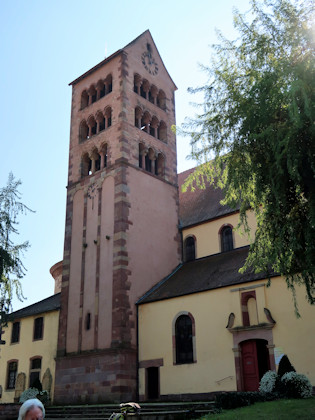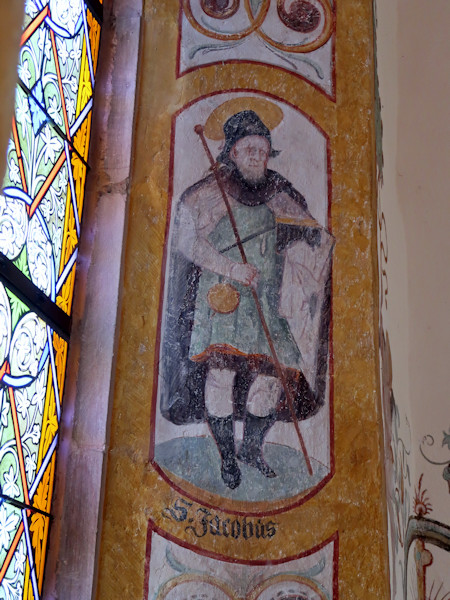
Breakfast in the monastery

Morning mood

Our morning ritual: attunement, singing and information on the way.

We leave the hospitable monastery.

The path leads through the forest ...

... and rises gently but steadily.

The morning mist sticks tenaciously to the mountainside. After about two hours we approach the pilgrimage site "Schauenberg".

On the slopes of the Vosges, with a wide view of the Rhine valley and the Black Forest opposite, lies the former Schauenberg hermitage. According to legend, the Countess of Hesse gave the hermit, who had retreated here in the 15th century, a small Madonna so that he would pray for her healing from serious illness. When she was then miraculously healed, a lively pilgrimage to the hermitage soon began. The first chapel, originally dedicated to St. Ulrich, later to Mary, dates from 1440. In the 16th-17th centuries, Franciscan monks from Rouffach settled there and built today's larger chapel. The small statue of the Madonna (15th century) is housed in a barred altar in the chapel after it was taken away during the French Revolution by inhabitants of Pfaffenfach. It was hidden by the inhabitants of Pfaffenheim during the French Revolution. Today, nuns from the neighbouring Saint-Marc convent look after pilgrims and visitors on Schauenberg.

From Schauenberg you should have a magnificent view. But this is denied us because of fog.

From Schauenberg, the Way of St. James continues uphill through the forest.

Occasionally you can see a little into the valley or have a glimpse of the view.

In the forest!

The path is well marked. Again and again there are signs.

View of the Vosges. Now the trail descends steeply to Sulzmatt (Soultzmatt).

First view of Soultzmatt. We have to go down there!

Soultzmatt with the Sebastian Church.
At the church, the accompanying bus awaits us with a picnic.

The church building (originally Romanesque) dates back to the 12th century. At that time, Soultzmatt was a fief of the bishops of Strasbourg. The church was destroyed in 1298 and 1444 (Armagnacken), and partially rebuilt in 1496. The Romanesque tower built in 1130 is beautifully preserved. Initially dedicated to St. Gregory, the church was rededicated to St. Sebastian as patron in 1309. Today, the original image of grace (end of the 15th century) of the pilgrimage chapel "Our Lady of the Schaeferthal" is kept in the church.


View into the chancel. On the left under the glass lintel is the Madonna.

As we climb further, we see the church from the other side (in the sunlight).

For a long time, the route is dead straight, always uphill on a cross path to the pilgrimage church "Our Lady of the Schaeferthal".

Our Lady of the Schaeferthal (Val du Pātre) stands on the site of a former hermitage that existed since 1339. The chapel was built in 1511 and enlarged in 1594. In 1797 the chapel was sold. Since 1803 it has once again been used for worship. The frescoes, partly from the 16th, partly from the 19th century, depict several apostles and other saints, including James. A painting on the south wall tells the legend of the chapel: the Blessed Virgin Mary is said to have come to the aid of a shepherd when his flock was in danger of dying of thirst by causing a spring to gush forth on the spot. The spring is still flowing today.





It continues uphill through the forest.

We are on the right track.

Our stage stop Guebwiller comes into view.







